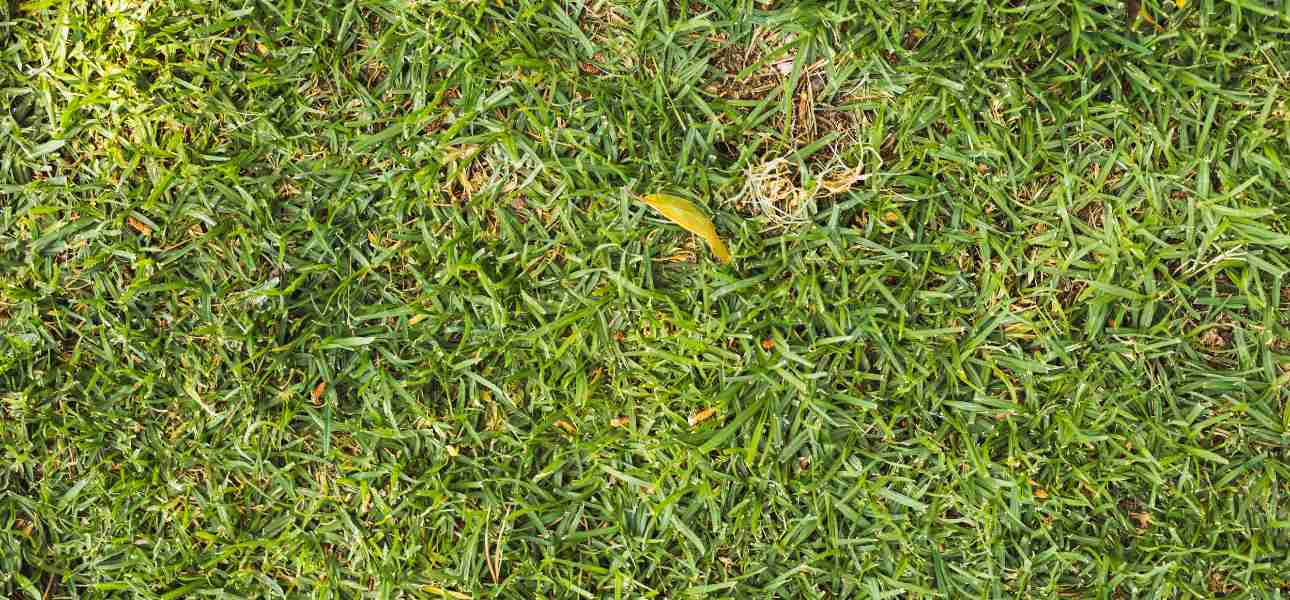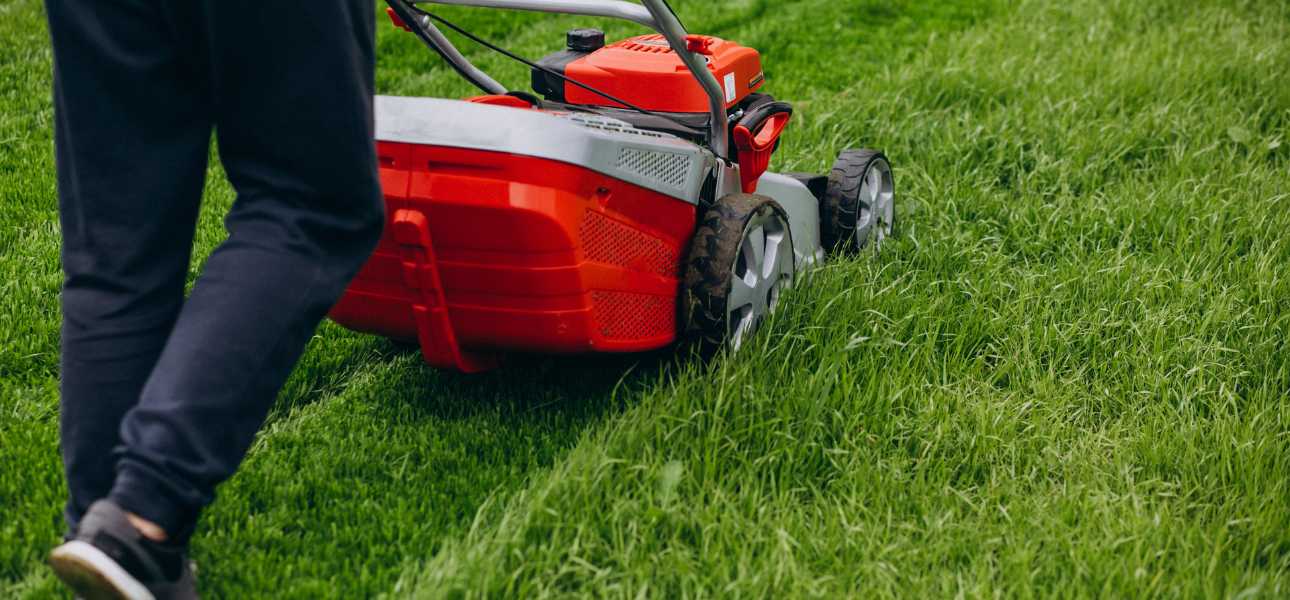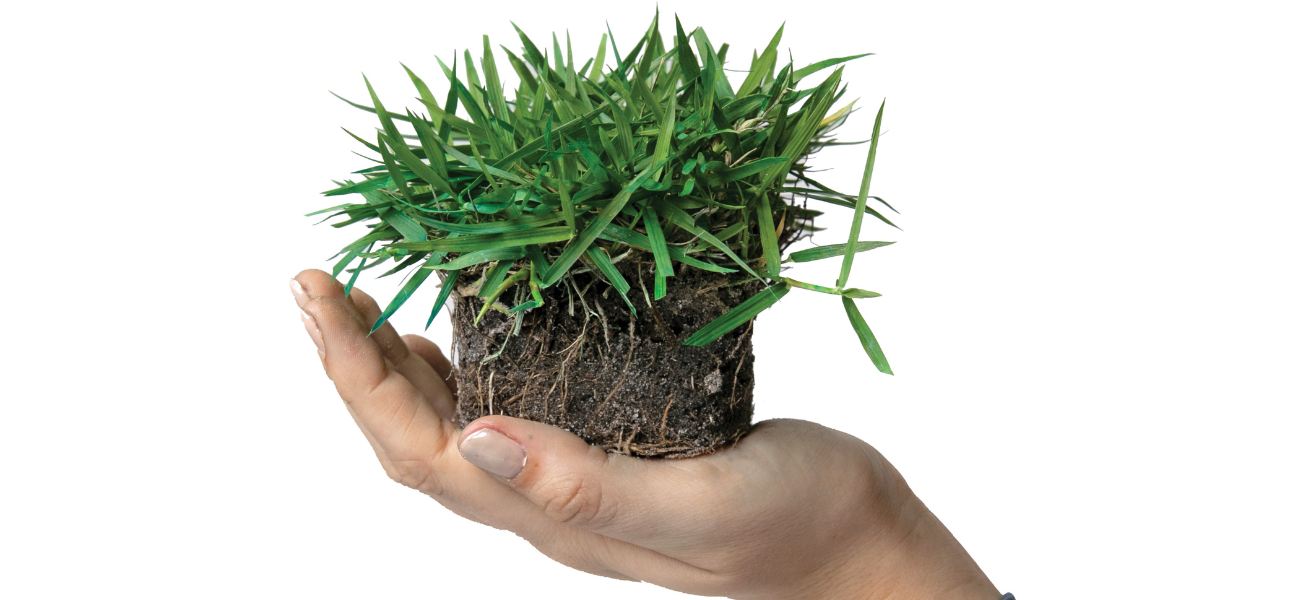How to Restore Lawn After Dethatching

Thatch is a layer of organic matter that accumulates on the soil surface. While a thin layer of thatch, usually half an inch or less, benefits your grass by providing insulation against heat and moisture loss, an excessive buildup can deprive your lawn of nutrients. It acts as a barrier that renders fertilizers less effective and prevents sunlight and water from penetrating the soil and reaching the roots.
Dethatching is an essential step in lawn care that can do wonders for your existing grass. It involves the use of a vertical mower or a power rake to remove excessive thatch, facilitating better airflow and nutrient penetration. However, it can also temporarily make your lawn delicate and stressed. The good news is you can take measures to ensure your grass bounces back with full force to its healthy green state.
When Should You Dethatch Your Lawn?
Organic debris like stems, leaves, and roots can naturally accumulate over time, but factors like overwatering, over-fertilizing, and mowing too high can exacerbate thatch buildup. Signs that it may be time to dethatch your lawn include a thatch layer of half an inch or more, a bouncy or spongy feel when you walk on the grass, footprints that take hours to disappear, and dry spots despite adequate watering, indicating the water isn't reaching the soil. Thick thatch layers can also make your lawn more vulnerable to diseases.
By looking out for these signs, you can determine when dethatching is necessary to keep your lawn in optimal condition. Here we have created a detailed guide on how to dethatch your lawn.

What Happens Next? What to Do After Dethatching a Lawn
After dethatching, your lawn may look stressed and thin with dry, dead-looking patches. It's normal and part of the process of keeping your lawn healthy. As long as you take proper measures, you should be able to restore your lawn to its lush and green state.
Dispose of the Thatch
Give your lawn a final once-over with a rake to remove any remaining thatch. It will help prevent the debris from settling back into your lawn. You can dispose of the organic waste by adding it to your compost pile or bagging it for disposal.
Mow Your Lawn
Your lawn may appear ragged and uneven after removing thatch. To give it a polished look, use the lawn mower immediately after dethatching to remove any remaining tufts of grass. This process will also reveal bare spots where you can plant grass plugs to facilitate new growth. However, ensure your mower is set slightly higher than usual to prevent scalping and damaging the crowns.

Water Your Lawn
After dethatching, the roots of your grass will be exposed, making them more susceptible to drying out. Speed up recovery and keep your grass from desiccating by giving it a thorough watering. Water until the soil is moist, but not waterlogged, usually about an inch of water, to promote new growth.
Aerate
Aeration involves pulling cores of soil from the surface to loosen the soil. While it is a separate process from dethatching, they often complement each other to create an environment conducive to grass growth. You can use a grass plug tool to function as an aerator to relieve soil compacted soil, improve drainage, promote root growth, and maximize nutrient uptake.
Repair Damaged Grass with Grass Plugs
While a healthy lawn will recover on its own after dethatching, you can accelerate the process by replacing damaged areas with grass repair pods. Planting grass plugs immediately after dethatching is beneficial because it opens up the surface of your lawn, facilitating better plug-to-soil contact.
Grass plugs aid in recovery by filling in bare spots and increasing the density of your lawn. Because they establish faster than grass seed, grass plugs also assist in weed control, effectively outcompeting weeds, leading to a thicker, healthier lawn in the long run.
After planting grass plugs, make sure to water your lawn thoroughly to help the new grass settle into the soil and encourage root growth. Adequate watering ensures the plugs become established, contributing to the overall resilience of your lawn.

Fertilize Your Soil
After the extensive dethatching process, your lawn can also benefit from an additional dose of nutrients to restore balance. Fertilizing is an essential step in your post-dethatching routine, providing your grass with the essential nutrients to continue growing.
We recommend supplementing your grass plugs with NutriPod®, a grass plug fertilizer designed to gradually release nutrients to facilitate establishment and accelerate the growth of your new grass without the risks of over-fertilizing or nutrient leaching. It contains a balanced blend of nutrients — nitrogen, phosphorus, and potassium, or NPK — essential for healthy growth. Drop each fertilizer pod into the planting hole before the grass plugs to ensure immediate access by the roots.
How to Prevent Thatch Buildup
As a conclusion, prevent future thatch buildup by maintaining proper lawn care practices.
Mow Properly: Maintain a consistent mowing schedule and avoid cutting more than a third of the grass blades at a time. It will ensure the grass clippings are small enough to decompose and do not contribute to thatch buildup. Additionally, mowing at the correct height encourages healthy root growth and reduces the likelihood of accumulating thatch.
Use Sharp Mower Blades: A dull mower blade can tear grass instead of cutting it cleanly. This can stress the grass, leading to increased thatch accumulation. Sharpen your mower blades to ensure a clean cut.
Maintain Ideal Soil pH: Soil pH affects microbial activity responsible for breaking down thatch. A soil test determines pH levels, which can help you ensure your soil pH is within the optimal range for your grass type.
Avoid Over-Fertilizing: Soil test recommendations can also provide specific guidance on fertilization practices tailored to your lawn's needs. It reduces the risks of over-fertilization, which stimulates excessive grass growth, leading to thicker thatch.
Water Properly: Warm-season grasses, such as Bermuda plugs, thrive with weekly watering of about one inch. Deep, infrequent watering promotes deep root growth, which is in contrast with shallow, frequent watering that can lead to unintended thatch buildup.
Overall, these preventive measures can help keep your lawn healthy and free of thatch, ensuring its long-term health and sustainability.

Enjoy a vibrant, healthy lawn with our premium-quality grass plugs. Grown in a pest and weed-free environment, our farm-fresh grass plugs are ideal for promoting healthy grass growth. We also offer grass plug tools that also function as aerators, providing everything you need to get started on your lawn transformation.
Visit the Try SodPods® website today!


